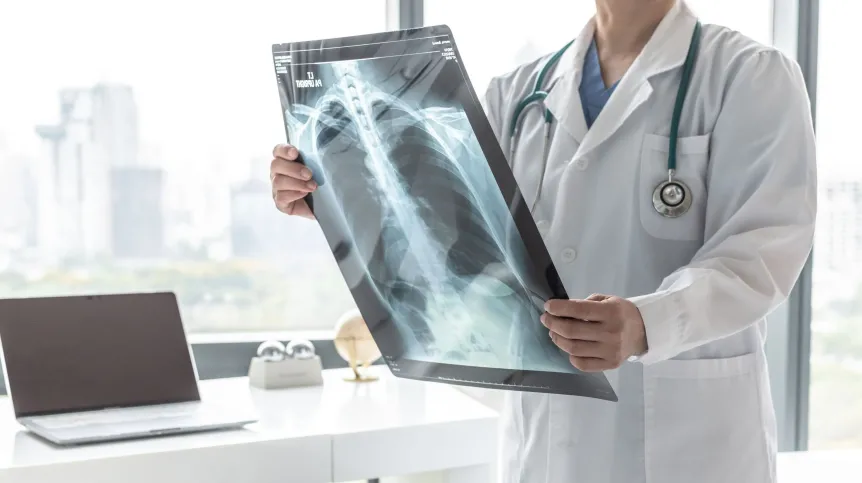
The type and degree of changes in the lungs, as well as the COVID-19 patient's condition can be evaluated more easily with AI assistant developed by researchers from the Provincial Hospital in Szczecin. The technology also facilitates predicting the risk of severe COVID-19.
'In collaboration with Pixel Technology, we have prepared an assistant capable of evaluating the degree of pulmonary tissue destruction', says the Chief Physician for COVID-19 at the Provincial Hospital in Szczecin, Professor Miłosz Parczewski.
The system combines computer tomography, molecular PCR, serological data, as well as a genetic sequence of the virus. A team of radiologists was involved in the implementation of the new technology. Doctors taught the AI algorithm to recognize changes in the lungs based on CT scans of lung tissue without contrast.
'The result is an AI assistant with a panel for a doctor, which very quickly assesses the degree of lung tissue destruction, its type, and whether the patient's condition is improving or deteriorating', Parczewski explains.
The panel shows a diagram of the lungs after CT scan, assessed by the AI assistant. The machine not only determines the degree of lung tissue destruction, but also locates the late, consolidation changes, and early changes, typical for SARS-COV-2, which helps select the appropriate treatment.
Professor Miłosz Parczewski explains that even if there is a description of X-ray is not yet available, a looks at the panel allows the doctor to identify and locate which changes in the lungs. He adds that the algorithm compares the results of subsequent CT scans, which allows to quickly assess the patient's situation.
'We have already assessed over 7,000 COVID patients and patients without this disease to teach the algorithm to distinguish between them. This is one of the largest AI databases in the world that was evaluated with such a modern method', he says.
He points out that the technology also allows doctors to 'predict the future' in terms of assessment of the risk severe COVID-19 and even the patient's death.
'We see that if someone has more than 50 percent lungs destroyed, then that person has over seven times higher risk of death, and this rule is valid regardless of age', says Professor Miłosz Parczewski.
He adds that the algorithm is used in the provincial hospital and last preparations are underway to open it for other interested centres in Poland.
'This, of course, is an assistance tool that will not replace the doctor, but it can help select the appropriate treatment', the infectious diseases expert concludes.
The technology was created as part of the project 'Support for COVID-19 hospitals in the fight against the spread of SARS COV-2 virus infection and the treatment of COVID-19', financed by the National Centre for Research and Development. (PAP)
Author: Elżbieta Bielecka
emb/ joz/ kap/
tr. RL













